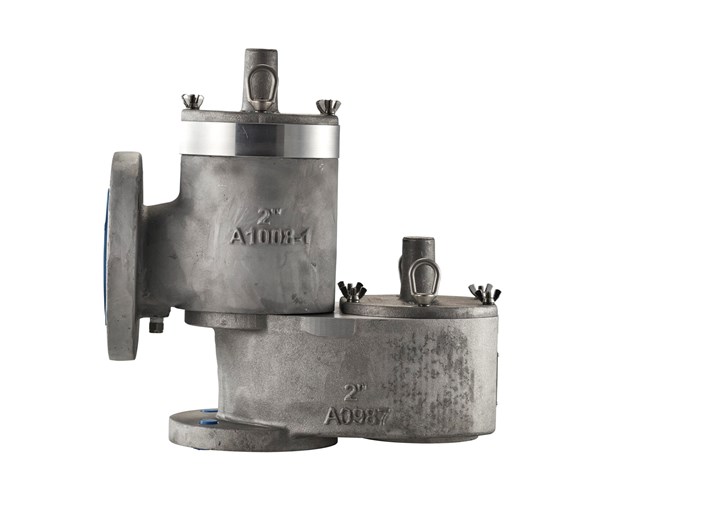|
Groth Corporation announces two new products: the Model 12E and Model 12F weight-loaded pressure/vacuum relief valves (PVRV).
Extensive research and development have resulted in a newly designed product that exceeds industry needs. The Model 12E and 12F weight-loaded PVRVs achieve both superior sealing performance and industry-leading flow rates while allowing customers to reach the required flow with a potentially smaller-sized valve, lowering the cost to protect tank equipment and onsite personnel. The Model 12E and 12F weight-loaded PVRVs feature 10% overpressure technology allowing customers to set their valves closer to flowing pressures, minimizing product losses and maximizing profit.
“The Models 12E and 12F are superior sealing pressure vacuum relief valves designed to protect the tank from damage created by overpressure or excessive vacuum, greatly reducing costly product evaporation losses due to normal tank ‘breathing,’” says Trey Rothenberger, VP of global sales at Groth Corporation. “Precision machining and manufacturing along with ultra-tight sealing reduces product leakage and fugitive emissions.”
New Model 12E PVRV design for tank protection from overpressure or excessive vacuum.
Photo Credit: Groth Corporation
Model 12F PVRV.
Photo Credit: Groth Corporation
Made from aluminum, carbon steel, and stainless steel, the Models 12E and 12F are available in sizes from 2” (DN 50) through 12” (DN 300), in pressure settings from 0.866 – 41.5 inWC, 2.15 - 103.4 mbar, and vacuum settings of 0.803 – 41.5 inWC, 2.00 - 103.4 mbar. Superior tightness exceeds API 2000 leak requirements.
Features:
- Flow capacities in values between 10-100% or greater
- Product leakage and fugitive emissions are reduced via ultra-tight sealing
- Higher flow capacity to protect from both excessive pressure and excessive vacuum build-up
- Peripheral and central seat guides ensure reliable, repeatable performance
- Designed for easy maintenance, thus reducing downtime and operational cost
Options:
Corrosion resistance can be enhanced with fluorocarbon-based fluoroelastomer or fluorine rubber / fluoro-rubber (FKM) soft goods.
Technical Details:
- Size: 2” (DN 50) through 12” (DN 300)
- Casting Material: Aluminum, Carbon Steel, Stainless Steel
- Pallet Material: Aluminum, Stainless Steel
- Diaphragm Materials: Buna-N, Blue FKM or FEP
- Weight Material: Zinc-Plated Steel, Stainless Steel
- Bolting Class: 150# ASME, PN10, PN16, JIS drilling classes available
- Available Pressure Settings: 0.866 – 41.5 inWC, 2.15 - 103.4 mbar
- Available Vacuum Settings: 0.803 - 41.5 inWC, 2.00 - 103.4 mbar
- Superior tightness, exceeding API-2000 leak requirements
- PED and ATEX Certified
|












 Unloading large gate valve.jpg;maxWidth=214)